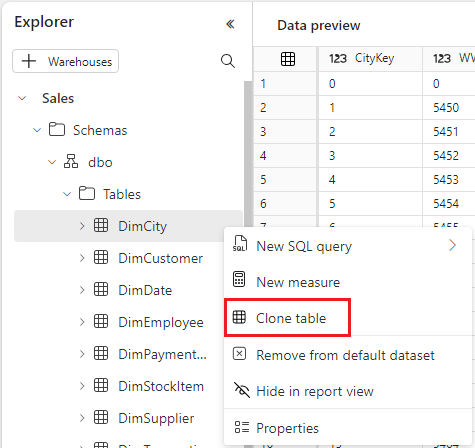Time-Travelling through data: The Magic of Table clones
On July 5th, we announced the ability to clone data warehouse tables within Microsoft Fabric as of current point in time. The ability to clone tables is a powerful technique that not only empowers businesses to streamline reporting and analytics but also helps expedite development and testing processes.
While data warehouses constantly evolve, it is often necessary to capture a snapshot of data as it existed at a particular moment in time. We are now excited to introduce the ability to clone tables with time travel, up to a default data history retention period of seven calendar days. Table clones can be created within and across schemas in the data warehouse within Microsoft Fabric.
Businesses can now unlock the ability to perform historical trend analysis, enabling them to compare data from various historical points. It empowers them to identify trends and facilitates making well-informed, data-driven decisions.
Cloning a table at previous time points offers the advantage of preserving historical data records, serving a valuable role in meeting various audit and compliance requirements. When data discrepancies occur, these clones not only assist in generating older table versions for root cause analysis but also help create older versions of the table for seamless business continuity.
We are also excited to offer you an intuitive user experience (UX) to clone tables enabling you to choose and clone multiple tables at once.

The Power of Choice
Whether you gravitate towards the experience through T-SQL or embrace the simplicity of UX, both methods cater to the needs of technical experts, citizen developers and analysts. The ability to create table clones in Synapse data warehouse within Microsoft Fabric significantly boosts the convenience and efficiency of data recovery and analysis like never before.
Get started with time travel by creating your clone either through T-SQL or through UX in the Microsoft Fabric portal.




